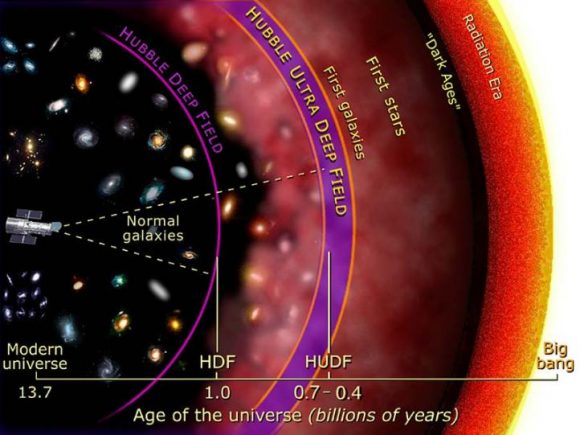NASA has some high hopes for the James Webb Space Telescope, which finished construction at the end of November, 2016. The result of 20 years of engineering and construction, this telescope is seen as Hubble's natural successor. Once deployed in October of 2018, it will use a 6.5 meter (21 ft 4 in) primary mirror to examine the Universe in the visible, near-infrared and mid-infrared wavelengths.
All told, it will be 100 times more powerful than its predecessor, and will be capable of looking back 13 billion years in time. To honor the completion of the telescope, Northrop Grumman - the company contracted by NASA to build it - and Crazy Boat Pictures teamed up to produce a short film about it. Titled "Into the Unknown – the Story of NASA's James Webb Space Telescope", the video chronicles the project from inception to completion.
The film (bottom of the page) combines scenes of the telescope's construction, and conversations with the scientists and engineers who were involved in its creation, with some stunning visuals. In addition to detailing the creation process, the film also delves into the telescope's mission and all the cosmological questions it will address.
In addressing the nature of James Webb's mission, the film also pays homage to the Hubble Space Telescope and its many accomplishments. Over the course of its 26 years of operation, it has revealed auroras and supernovas and discovered billions of stars, galaxies and exoplanets, some of which were shown to orbit within their star's respective habitable zones.
On top of that, Hubble was used to determine the age of the Universe (13.8 billion years) and confirmed the existence of a supermassive black hole (SMBH, aka. Sagitarrius A*) at the center of our galaxy, not to mention many others. It was also responsible for measuring the rate at which the Universe is expanding - in other words, measuring the Hubble Constant.
This played a pivotal role helping scientists to develop the theory of Dark Energy, one of the most profound discoveries since Edwin Hubble (the telescope's namesake) first proposed that the Universe is in a state of expansion. So it goes without saying that Hubble played a major role when it comes to some of greatest discoveries in modern astronomy.
That being said, Hubble is still subject to limitations, which astronomers are now hoping to push past. For one, its instruments are not able to pick up the most distant (and hence, dimmest) galaxies in the Universe, which date to just a few hundred million years after the Big Bang. Even with "The Deep Fields" initiative, Hubble is still limited to seeing back to about half a billion years after the Big Bang.

Illustration of the depth by which Hubble imaged galaxies in prior Deep Field initiatives, in units of the Age of the Universe. Credit: NASA and A. Feild (STScI)
The JWST's instruments are expected to reach further, to a period of just over 100 million years, when they very first galaxies formed in the Universe. The JWST is also designed to operate at the L2 Lagrange Point, farther away from the Earth than Hubble - which was designed to remain in geosynchronous orbit. This means the JWST will subject to less thermal and optical interference from the Earth and Moon, but will also make it more difficult to service.
With its improved suite of segmented mirrors, it will observe the Universe as it was shortly after the Big Bang. With its extremely-sensitive suite of optics that will gather information in the long-wavelength (orange-red ) and infrared wavelengths, it will capture the light from the first stars and galaxies, measure the redshift of distant galaxies, and even help in the hunt for exoplanets.
Construction of the telescope wrapped up at the end of November. For the next two years, it will be subject to some final tests before its scheduled launch date in October of 2018. These will include stress tests that subject the telescope to the types of intense vibrations, sounds and g forces it will experience inside the Ariane 5 rocket that will take it into space.
Six months before its deployment, NASA also plans to send the JWST to the Johnson Space Center where it will be subjected to the kinds of conditions it will experience once its deployed. This will consists of scientists placing the telescope in a chamber where it be subjected temperatures of 53 K (-220 °C; -370 °F), which will simulate its operating conditions at the L2 Lagrange Point.
Further Reading: NASA - JWST, Northrop Grumman





No comments:
Post a Comment